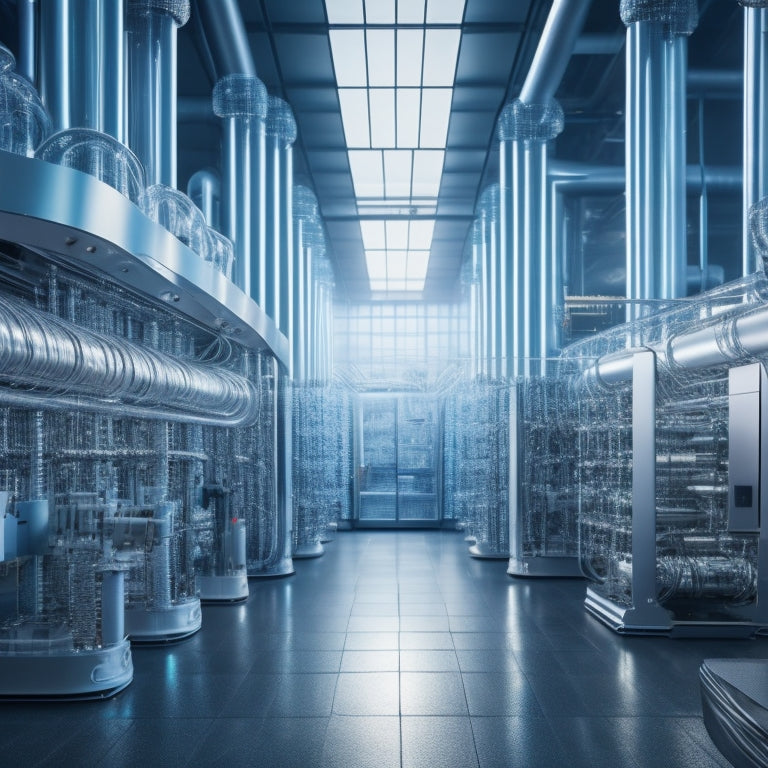
Revolutionizing Manufacturing: Resin 3D Printing Explained
Share
Resin 3D printing is rapidly transforming the manufacturing landscape by offering unparalleled precision, speed, and flexibility. The three primary technologies - SLA, DLP, and LCD/mSLA - cater to diverse industrial applications and production requirements. SLA excels in high-precision applications, DLP in speed, and LCD/mSLA balances both. Proper resin handling, maintenance, and best practices are essential for optimal performance and quality production. By grasping the nuances of each technology and adhering to meticulous guidelines, manufacturers can access the full potential of resin 3D printing, and discover the intricacies that set it apart as a revolutionary manufacturing solution.
Key Takeaways
• Resin 3D printing technologies, including SLA, DLP, and LCD/mSLA, offer unique approaches to curing resin for high-precision manufacturing.
• SLA ideal for high-precision parts, DLP excels in speed, and LCD/mSLA balances both, making them suitable for various industrial applications.
• Proper resin handling, storage, and safety precautions are crucial for optimal print quality, minimal post-processing, and worker safety.
• Maintaining precise layer thickness, calibrated exposure times, and controlled environmental conditions are essential for optimal resin printing outcomes.
• Selecting the right resin 3D printing technology and following best practices enable efficient and precise production of complex parts in various industries.
Resin 3D Printing Technologies
Resin 3D printing encompasses a range of technologies, including Stereolithography (SLA), Digital Light Processing (DLP), and Liquid Crystal Display (LCD)/mSLA, each with its unique approach to curing liquid resin and producing high-resolution parts.
A resin printing comparison reveals that SLA is ideal for high-precision applications, while DLP excels in speed. LCD/mSLA offers a balance between the two.
Industrial applications of resin 3D printing include dental, jewelry, and engineering. To ensure best performance, resin printer maintenance is pivotal, involving regular cleaning, calibration, and troubleshooting tips such as checking for clogged nozzles and adjusting exposure times.
Proper maintenance enables consistent production of high-quality parts, making resin 3D printing a valuable asset in various industries.
Understanding SLA and DLP
Employing a focused beam of ultraviolet light, Stereolithography (SLA) and Digital Light Processing (DLP) technologies diverge in their approaches to solidifying liquid resin, resulting in distinct advantages and limitations for each method.
SLA utilizes a UV laser to draw part cross-sections on liquid resin layers, producing high-quality, isotropic parts with smooth surfaces.
In contrast, DLP cures entire resin layers at once using a digital projector, offering faster printing speeds but typically lower resolution.
A key differentiator lies in resolution comparison, with SLA often achieving higher resolutions (up to 0.01 mm) compared to DLP (around 0.05 mm).
Understanding the nuances of SLA vs DLP enables manufacturers to select the best-suited technology for their specific application, ensuring precise and efficient resin 3D printing.
Liquid Crystal Display Printing
Liquid Crystal Display (LCD) 3D printing, also known as masked stereolithography (mSLA), leverages the high-resolution capabilities of LCD screens to cure liquid resin layers with remarkable precision.
This technology utilizes an LCD screen and LEDs to project images onto the resin, allowing for accurate and rapid curing. The LCD screen's high pixel density enables the creation of intricate details and complex geometries.
By employing LCD technology, resin curing is achieved with exceptional uniformity, resulting in parts with smooth surfaces and high accuracy. This method is particularly suitable for applications requiring high-resolution prints, such as jewelry, dental, and medical models.
With its ability to cure entire resin layers at once, LCD 3D printing offers a reliable and efficient solution for manufacturing complex parts.
Working With Resin Materials
In the field of vat photopolymerization, mastering the nuances of resin material handling is vital to achieving best print quality and minimizing post-processing requirements. Proper handling involves understanding the toxicity of liquid resin and taking necessary precautions to minimize exposure.
Material storage is essential, as resins are sensitive to UV light and should be stored in opaque containers to prevent degradation. It's also important to check expiration dates and shake resin containers regularly to improve their lifespan.
Additionally, storing resins at the recommended temperature range of 5°C to 30°C is optimal to maintaining their best properties. By following these guidelines, users can guarantee consistent print quality and reduce the risk of print failures.
Best Practices for Resin Printing
Best resin printing outcomes rely on adherence to a set of meticulous guidelines. This encompasses precise layer thickness, calibrated exposure times, and controlled environmental conditions.
To achieve ideal results, it is essential to follow resin printing tips. These include maintaining a consistent layer thickness between 0.01-0.1 mm, adjusting exposure times according to the specific resin and printer, and ensuring a stable temperature range between 20-25°C.
Additionally, resin safety precautions must be taken seriously. This includes wearing protective gloves and eyewear, working in a well-ventilated area, and storing resin in opaque containers to prevent UV light exposure.
Frequently Asked Questions
Can Resin 3D Printing Be Used for Large-Scale Industrial Production?
Resin 3D printing faces scalability challenges in large-scale industrial production due to material limitations, such as resin viscosity and curing times, which hinder efficient production and necessitate innovative solutions to overcome these constraints.
How Does Resin Printing Compare to FDM in Terms of Cost-Effectiveness?
When it comes to cost-effectiveness, resin printing excels in small-batch, high-precision production, while FDM is more economical for large-scale, rapid prototyping; a thorough cost comparison reveals resin's value in precision-critical applications, but FDM's scalability advantages for mass production.
Are There Any Eco-Friendly or Biodegradable Resin Options Available?
As the industry awakens to the environmental impact of resin printing, eco-friendly options emerge, such as biodegradable resins derived from plant-based materials, offering a sustainable future for additive manufacturing while maintaining performance and precision.
Can Resin Prints Be Painted or Finished With Traditional Materials?
Resin printing allows for artistic finishes, and yes, resin prints can be painted or finished with traditional materials, requiring surface preparation and primer for best adhesion, enabling a wide range of aesthetic and functional applications.
Are Resin 3D Printers Suitable for Use in Home or Office Environments?
"While it's tempting to imagine a resin 3D printer humming away on your kitchen counter, the reality is that these devices require careful consideration of safety and ventilation to prevent hazardous fume exposure, making dedicated, well-ventilated spaces a necessity."
Related Posts
-

Master Your Space With Digital Decluttering Tools
You're tired of feeling overwhelmed by digital clutter, wasting time searching for lost files, and struggling to focu...
-

Simplify Your Space: Downsizing Tips for Seniors
You're ready to simplify your space and create a more peaceful living environment. Start by gathering boxes, bins, an...

